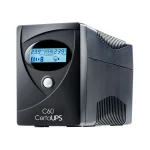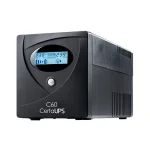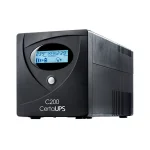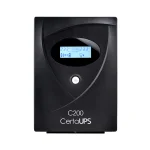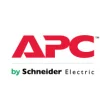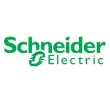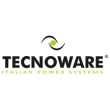On-line UPS systems provide the ultimate level of power protection. They provide a digitally generated sinewave output to their connected loads and are classed as Voltage and Frequency Independent (VFI) of the incoming mains power supply. On-line UPS also feature a built-in automatic bypass to ensure safe failure-to-mains of the connected load(s) if the UPS inverter is overloaded or develops an internal fault condition.
Uninterruptible Power Supplies (UPS) from 500VA to 500kVA
Our uninterruptible power supplies ranges includs online, line interactive and standby systems, single, 3phase and modular with a range of battery options covering traditional lead acid and lithium battery solutions. We can help manage your system throughout its lifetime with maintenance contracts, preventative maintenance, replacement batteries and spares. All from one supplier with over 35 year delivering power protection projects.
- UPS Systems (677)
- UPS Solutions (678)
- UPS Technologies (662)
- Power Distribution (333)
- Backup Power (458)
UPS Power Supply Technologies
Static UPS are available in three core topologies, each of which provides a different level of power protection, and classified under BS EN 62040-3 to include:
- Online: Voltage and Frequency Independent (VFI-SS-111). The inverter is constantly running and digitally generates a sinewave output with a regulated voltage and frequency to supply the load. A rectifier is connected to an AC (alternating current) power source and converts this into the levels DC (direct current) required to charge a battery set and power the inverter section. When the mains supply fails, the Inverter draws power from the battery set and internal capacitance is used to cover the change in DC supply. This type of UPS is often referred to as ‘double conversion’ due to the AC-DC-AC conversion process or a ‘triple conversion’ system where the conversion is AC-DC-DC-AC. Online offer the ultimate in power protection and have a built-in automatic bypass for safe-failure-to-mains in the case of a overload or fault condition.
- Line Interactive: this type of system has an inverter section which only powers the load when the mains fails or fluctuates outside a threshold window and is referred to as Voltage Independent (VI). The output frequency tracks the input when mains power is present. A line-interactive system has an EMI/Spike suppression filter and automatic voltage regulator (AVR) or automatic voltage stabiliser (AVS) built-in to protect from sags, surges and brownouts. When mains power is present the battery set is charged and the inverter is powered but in a ‘sleep mode’. If there is a power outage the inverter activates and connects to the load in 2-4milliseconds and supplies power from the battery.
- Standby: a standby or off-line system is classed as Voltage and Frequency Dependent (VFD). The system has an EMI filter and the output supply tracks the mains voltage and frequency. The inverter is off-line and only power up during a power outage to provide battery power to the load.
UPS Power Supplies – The Key Technology Differences
Inside most modern electronic equipment is a switch mode supply (SMPS). This converts the incoming AC (alternating current) into the levels of DC (direct current) required to power internal circuits and processors. Voltage and frequency fluctuations can stress the SMPS and lead data processing errors, intermittent hardware faults and sudden failures.
UPS systems protect sensitive electronic and electrical devices by providing them with a cleaner, conditioned and regulated power and a source of battery backup if there is a power outage or the mains voltage and frequency drifts outside of the input window of the SMPS. The degree of protection provided by the three topologies varies and can be classified as Ultimate, Intermediate and Basic depending on the topology and level of sophisticated of the device.
The following table summarises the key differences between the topologies and how they provide protection in the event of a power cut or interruption:
| UPS Type | Protection Level | Output | Automatic Bypass | Voltage Regulation | No-break Output | Size Range |
|---|---|---|---|---|---|---|
| Online | Ultimate | sinewave | yes | yes via the AC-DC-AC process | continuously running inverter | 400VA-800kVA, 1MW and larger |
| Line Interactive | Intermediate | sinewave, step wave or square wave* | no | yes with a built-in AVR/AVS | 2-4ms | 400VA-3kVA |
| Standby/Off-line | Basic | step wave or square wave* | no | no | 2-4ms or greater | 400VA-1.5kVA |
Note: * product dependent – refer to specifications
Static UPS systems are available from 400VA up to 1MW and larger. The systems topologies include monoblock transformerless and transformer-based designs and transformerless modular systems, desktop, tower, rackmount and floor standing. Online systems can act as frequency converters from 50-60HZ or 60-50Hz. 400Hz systems are also available. Transformerless systems have high operating efficiencies of up to 96% or greater when operated in full online mode. Eco mode type function allows the UPS to reach 99% efficiency.
UPS System Backup Runtimes and Generators
Some line interactive systems can be installed with battery extension packs that plug into the rear of the product. The additional battery backup may be charged by the charging circuit built-into the UPS or may have its own charger and therefore require a separate AC mains power socket.
Online provide longer runtimes, either by replacing the internal battery for a higher Ampere-hour (Ah) rated battery or the use of external battery extension packs. External batteries may be supplied in a battery cabinet or on a battery stand. Provision may have to be made for additional charging if the rectifier does not have sufficient charging capacity for the higher Ah-rated battery set.
For long runtimes lasting several hours a backup power supply and generator system can prove to be a more cost-effective solution.
Typical Power Problems
An uninterruptible power source protects sensitive eletronic devices, computers, servers and electrical devices in the event of a mains supply problem:
- Power Outages:: include intermittent breaks in the supply caused by a local storm, lighting striking a part of the electricity distribution infrastructure or a break in the grid. Outages can last from several seconds to several hours or longer.
- Sags: lower than normal (in the UK 230Vac single-phase or 400Vac three-phase) mains voltages for several cycles. As long as the reduced voltage is within the input window of the SMPS the electronic device will continue to receive the levels of DC power it requires but the SMPS itself has to draw more current. This can lead to heat and component stress within the power supply. Causes include heavy inductive loads starting up on site including motors, air conditioners or simply a larger number of electricity consumers on the grid. Solar PV feed-in supplies can also lead to higher than normal voltages in areas with a high concentration of solar PV farms and roof-top installations
- Surges: higher than normal voltage levels again lasting for several cycles. If the surge voltage is too high, overvoltage surge protection built-into the SMPS may activate leading to a cut-out and load crash. Causes again include heavy inductive loads turning on or off.
- Brownouts: are similar to sags but last for several hours or even days. Brownouts are more common with overhead land lines and during winter periods with high consumer demand on the grid.
- Spikes and Energy Transients:: these burst of high energy, as high as 6kV or more that are too large or moving too fast for the EMI filter and circuit protection built-into a SMPS. Nearby lightning strikes are a common cause. Other causes include faulty electrical switches including lighting and inductive motors.
- Electrical Noise: which can be classed as either (a) Common Mode – a disturbance between the mains supply lines and earth (phase-to-earth or neutral-to-earth) or (b) Normal Mode – a disturbance between phase and neutral. Exposure over the long term to electrical noise can lead to stress induced component wear and failure. Causes include light flickers, poorly designed or maintained LV switchgear and cable faults.
- Harmonics:: harmonic pollution in the UK is governed by G5/5 published by The Energy Networks Association. Harmonics are voltage or current waveforms superimposed onto the fundamental mains supply waveform. In the UK (and Europe) the fundamental frequency is 50Hz (50 cycles per second). Harmonics are ordered: 2nd Harmonic 100Hz, 3rd harmonic 150Hz and so on. Harmonics can lead to a distorted mains supply voltage, LV switchgear overheating and the nuisance tripping of circuit breakers.
The three topologies differ in how they provide protection from power problems. A standby/off-line unit provides basic protection i.e. spikes, transients and electrical noise are suppressed to lower levels, the incoming voltage and frequency is tracked until it is either too high or too low for the unit to power the load without its inverter activating. Online UPS provide a digitally generated sinewave from a continuously running inverter to which the load is always connected during normal operation. If the mains supply fluctuates or fails the battery set provides DC power to the inverter without a break. Line interactive systems provide intermediate protection, superior to that of a standby/off-line system but not to the high-grade level of an online device.
Rotary Power Systems
Rotary systems differ to static UPS systems and use a continuously rotating mass or motor to generate their electrical power. Rotary systems run from several hundred kVA to Mega-Watt sized installations and require similar project and installation management planning to a generating set.
What do Critical Power Suppplies do?
UPS systems provide battery backup when the mains power fails and are designed to support a specific load size measured in kVA or kW. It is important to ensure that the UPS system is correctly sized for the load it is to support whether the device is protecting a single piece of IT equipment, a server room, data centre or industrial application. The following list provides information that can help to guide you through the selection process.
Product Load Connections
Uninterruptible power supplies will have plug-in sockets or hardwired terminals or a combination of both. Plug-in sockets are typically of the IEC320 C13 or C19 type dependent upon the power rating and will may be grouped into outlets that provide filtering for spikes and electrical noise and battery backup, and battery backup only, this type of arrangement supports load shedding when the mains supply fails. Locking IEC to IEC cables should be considered for critical IT loads to prevent accidental disconnection. UPS above 3kVA/3kW provide hardwired input and output connections to comply with electrical safety regulations. One or more sockets may also be provided for small loads or a service engineer to use when conducting testing and preventative maintenance.
It is important to plan and map out how your load connections are to be made. This may be directly into the device itself or via a PDU.
Sizing in VA (kVA) or Watts (kW)?
UPS Power systems should be sized to run at 80% of their capacity. This provides 20% headroom for overloads and short-term additional load demands. On-line UPS systems incorporate a built-in automatic bypass switch. This includes an output waveform monitoring circuit which will initiate a transfer of the critical load(s) to the raw mains supply if the waveform is seen to start to collapse; in the case of UPS overload, short-circuit or internal UPS fault condition. Line interactive and standby/off-line UPS do not have an automatic bypass and will current limit their output and eventually cut-out of circuit to protect themselves, resulting in a load crash.
Battery Backup Runtimes
The amount of battery runtime your UPS will provide is dependent upon the load kVA/kW, Ampere-hour (Ah) rating of the battery set and the battery charge percentage. The most used type of battery in a backup supply is a valve regulated lead acid (VRLA) maintenance free battery with either a 5-year or 10-year design life. This type of UPS battery will require replacement within years 3-4 or years 7-8 respectively. Your uninterruptible power source will include battery testing as part of its firmware which will be automatically activated (every 24hours typically) or manual from a front panel or remote command.
The UPS will alarm if the battery requires replacement via a front panel LED, LCD, or remote communications interface.
The battery testing will rate the overall health of the battery set. The problem with this type of UPS battery testing for extended runtime battery sets, is that the test is for the complete battery string rather than individual batteries. When placed under load during a mains power supply failure, the available battery capacity can collapse. Individual UPS battery testing should be considered as part of an annual preventative maintenance plan.
Lithium-ion Batteries
Lithium-ion batteries can also be used with some uninterruptible backup power systems. These will have more sophisticated battery management systems and the expected working life of a li-ion battery set will be 10-15 years. Lithium batteries can cycle faster than more traditional lead acid UPS batteries and are more temperature tolerant.
Parallel and Modular Systems for a Data Center or Server Room
There are two types of parallel UPS system.
- Parallel-Capacity: this is created by connected two or more UPS in parallel where the total power of the system is equal to the sum of the individual UPS systems. For example 2 × 100kVA UPS in a parallel-capacity system will provide up to 200kVA and without redundancy.
- Parallel-Redundant: this arrangement involves two or more UPS in a parallel N+X configuration where one or more of the units provides redundancy. For example, 2 × 100kVA UPS in an N+1 configuration has a capacity of up to 100kVA and 100kVA redundant capacity. If the 100kVA UPS fails, the second unit can support the load.
A modular systems uses a frame which will have a total capacity size and make use of individual modules that can be connected in parallel-redundant or parallel-capacity configurations. For example a Legrand KEOR MOD 125kVA frame using 25kVA modules.
Operating Ambient Temperature
The ideal temperature for a server room or data hall is 18-25⁰C and this is suitable for a lead acid-based battery system. Lead acid batteries are not temperature tolerant, and their design life can halve for every 1⁰C rise above 30⁰C.
Within a server rack cabinet, temperatures can rise higher than the recommended server room ambient temperature. It is important to monitor internal server rack temperatures and prevent ‘hot-spots’ to protect the IT servers, network devices and any rack mount systems installed within the server cabinets.
Most backup supplies will have internal fans for cooling, drawing air through the front of the units and exhausting through the rear. Fan intakes and exhaust areas should be clear, and space should generally be left between the sides of the UPS and external cabinet, racks, or room walls. Always follow the manufacturer’s installation requirements. UPS systems will use variable speed fans, with N+X resilient and alarm monitoring for either fan failure and/or a high internal temperature. Fans should be inspected, cleaned, and replaced as a consumable item as required and as part of a preventative maintenance contract.
Remote Monitoring Solutions
UPS supplies can be remotely monitored using their communications options. This can include a slot-in or plug-in UPS communications card offering SNMP or Modbus protocols for use with manufacturer’s monitoring and control software or a data centre infrastructure management (DCIM) package. An interface may also provide dry-contacts/volt-free signal contacts for use with a building management system (BMS). A local USB or RS232 (on legacy systems) will also provide a means for local interfacing for a service engineering.
Whilst UPS will have a LED and audible alarms, it is important to remotely monitor any uninterruptible power and backup device. An alarm may indicate a battery issue (time for replacement), fan fault, high internal temperature, overload and even UPS out of service.
Regular Testing
It is important to test and verify the setup of your system regularly. This can be done by disconnecting or removing the input power source so that the system alarms for a mains power failure and starts to discharge its battery set. For smaller systems, the connected load can be used with the appropriate approval(s) but for larger systems load banks may be required as part of preventative maintenance routines. Testing should be performed at least one a year or every 6 months or when there is a fundamental change to the UPS configuration in terms of load connection.
UPS Phase and Power Supplies Voltage Selection
With a backup system it as important to select the right input and output phases and voltages as it is the kVA / VA or kW / Watts. Single phase uninterrupted power supplies have single phase output and single-phase input. The UK single-phase voltage 230Vac 50Hz. Three phase systemshave a three-phase input and can 3/1 (3phase input / 1phase output) or 3/3 (3phase input / 3phase output). The UK 3phase voltage is 400Vac 50Hz.
UPS Power Systems and Generators
Generators are often used in server room or data centre environments to provide long duration backup power. A UPS power supply is installed between the critical load(s) and generator to cover the start-up period of the generator when there is a power outage.
For more information on the products we supply for back-up power solutions for use in data centre and server room applications please contact our Projects team. Our leading brnads include APC, Borri, CertaUPS, Eaton, Legrand, Riello, Schneider, Tecnoware, Tripp Lite and Vertiv with many systems in stock available to order online.

Earn SRE points on all online purchases with double points on selected products



























